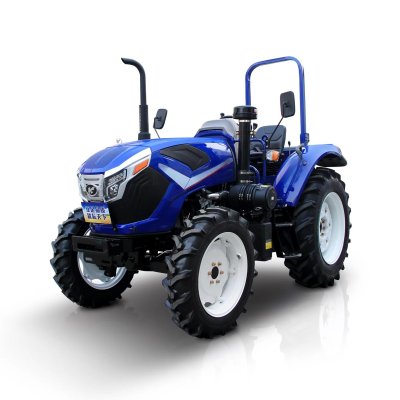AI Technology Empowers Agricultural Mechanization (Part 3)
Ⅳ. Development Trends of AI Technology in Agricultural Mechanization in the Future
1. Continuous Improvement in Intelligence Level
Integration of Comprehensive Sensing Technologies: Future agricultural mechanization equipment will integrate more types of sensing technologies to achieve all - round and multi - level perception of the farmland environment and crop growth. In addition to existing sensors such as temperature, humidity, and light sensors, hyperspectral sensors will be introduced to analyze crop nutrient composition and early - stage pest and disease infections; biosensors can detect the activity of microorganisms in the soil. The integration and mining of data from multiple sensors can more accurately grasp the state changes during crop growth, providing more abundant and comprehensive data for the AI system to make more accurate decisions. For example, by combining hyperspectral imaging with the measurement of plant electrophysiological characteristics, early and accurate judgment of crop drought stress and nutrient absorption can be made, and timely countermeasures can be taken to improve crop yield and quality.
Deep Reinforcement Learning Facilitates Better Decision - making: With the development of deep reinforcement learning algorithms in AI technology, the decision - making system in agricultural mechanization will be further optimized. For example, in irrigation operations, the AI system based on deep reinforcement learning algorithms continuously learns the optimal irrigation strategies for different crops at different growth stages, under different soil conditions and climate environments, so as to achieve more accurate irrigation decisions and avoid waste of water resources. In terms of agricultural product picking, the system can comprehensively judge the most accurate picking time and priority picking order based on multiple factors such as crop maturity and market value, maximizing the benefits of agricultural production. This deep reinforcement learning algorithm can also make agricultural machinery work more intelligently in coordination, like a smart team, dynamically adjusting the working methods and paths according to factors such as their positions and working states, and improving the overall efficiency of farmland operations.
2. Diversified and Large - scale Development of Agricultural Robots
Diversified Function Development: The types of future agricultural robots will be more abundant. In addition to existing weeding robots, plant protection robots, and picking robots, robots such as precise fertilization robots and crop seed detection robots will also be developed. Precise fertilization robots can accurately calculate and apply a certain amount of fertilizer according to factors such as soil fertility and crop nutrient requirements, achieving more scientific fertilization management and improving fertilizer utilization. Crop seed detection robots can quickly and non - destructively detect indicators such as seed germination rate, health, and purity to ensure the quality of seeds for sowing. For the growth cycles and characteristics of different crops, agricultural robots will also have more diverse and detailed function development. For example, there will be special vine - pruning robots for grape cultivation and refined topping robots for cotton cultivation.
Large - scale Promotion and Application: With the maturity of technology and the reduction of costs, agricultural robots will be more widely and massively applied in agricultural production. They will gradually move from small - scale experimental fields and modern agricultural demonstration parks to the large - area farmland of ordinary farmers. This will greatly reduce the labor intensity of farmers and solve the current problem of rural labor shortage. Moreover, in the process of large - scale application, agricultural robots and other agricultural machinery and equipment will achieve more extensive interconnection and interoperability, constructing an intelligent agricultural production network. For example, multiple agricultural robots can collaborate to complete the whole - process operations of sowing, irrigation, weeding, and harvesting in a large - scale farmland. The robots can share information such as operation progress and crop growth conditions in real - time, making management more efficient and production more profitable.
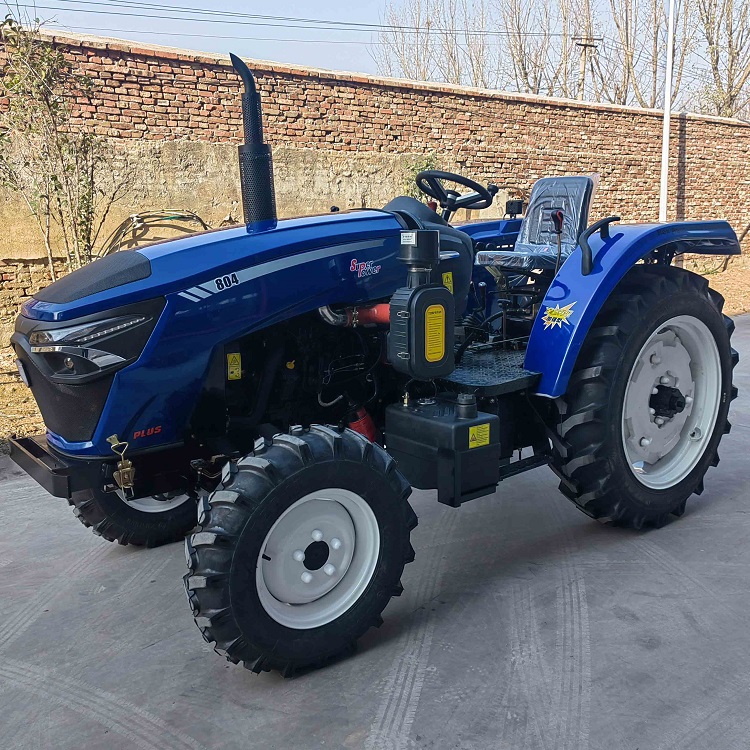
3. Deep Integration with Other Emerging Technologies
Collaborative Development of AI and the Internet of Things (IoT): The integration of AI and IoT technology will be closer. In future agricultural mechanization, IoT - based devices will provide a more stable and extensive data source for AI. The comprehensive connection of agricultural machinery equipment, agricultural facilities, and the farmland environment by IoT technology enables AI to obtain massive data in real - time for analysis and decision - making. For example, the IoT sensor network connects all irrigation equipment, fertilization devices, and agricultural machinery. AI then uses the data uploaded by these devices to optimize the entire agricultural production process and achieve more reasonable collaborative work among IoT devices. At the same time, AI technology can endow the IoT with intelligence, enabling IoT devices to have the ability of intelligent judgment and autonomous decision - making. Such a synergy will make agricultural production more automated, intelligent, and efficient.
Innovation through the Combination of AI with Biotechnology and Nanotechnology: The combination of AI and biotechnology will tap more agricultural production potential. For example, by analyzing biological gene data through AI, the breeding process of excellent crop varieties can be accelerated. AI technology is used to simulate the movement and interaction of biomolecules to develop new biological pesticides and fertilizers. The combination of AI and nanotechnology will also bring new innovations to agricultural mechanization. The combination of nanosensors and AI technology can monitor and analyze more micro - level information in agricultural production (such as the impact of nanoscale soil particle structure on crop roots and changes in the molecular structure of crop cell membranes). New materials developed by nanotechnology (such as nano - coatings to improve the corrosion resistance and self - cleaning properties of agricultural machinery equipment) can enhance the performance of agricultural mechanization equipment, while AI technology performs data integration, optimized control, and other tasks in these technological innovations, jointly promoting the technological progress of agricultural mechanization.

V. Experiences of Countries in Empowering Agricultural Mechanization with AI Technology
1. Experiences of the United States in AI - enabled Agricultural Mechanization
In - depth Application of GPS Technology in Agricultural Machinery Management: American farms are generally large - scale with a high level of mechanization. GPS is widely applied to agricultural machinery management. GPS and geographical terrain maps are installed on agricultural machinery, enabling all activity information of agricultural machinery during field operations (such as mechanical routes, operation time, tillage procedures, crop varieties, identification and loading of production materials, and mechanical fuel replenishment) to be accurately recorded digitally.
In this way, agricultural producers can connect to agricultural machinery equipment through a computer to achieve comprehensive monitoring and management of crop production. For example, agricultural producers can accurately arrange the application of pesticides and fertilizers in different plots and for different crops in different production cycles according to GPS records and map information, avoiding the problems of omission or repeated fertilization and pesticide application. Moreover, the use range of agricultural machinery can be locked according to GPS signals and electronic fences to ensure that agricultural machinery can only operate in the specified area, realizing the anti - theft function of agricultural machinery.
Collaboration between Remote Sensing Technology and Intelligent Machinery Systems: The United States uses remote sensing technology to obtain a large amount of information about farmland crops, such as crop growth stages, nutritional status, health levels, and physical states such as light, temperature, humidity, air, soil moisture content, and nutrients. And this information is transmitted to the intelligent machinery system.
The intelligent machinery system analyzes these data with the help of artificial intelligence and formulates production management measures to achieve intelligent control of crop growth. Take Monsanto as an example. They use remote sensing satellites and UAV photoelectric scanning technology to regularly obtain infrared images of cultivated land and send these images to the intelligent growth control system, thus realizing scientific management and control of production links such as crop sowing, fertilization, irrigation, and spraying. While improving crop yield and quality, a balance between effective resource utilization and ecological environment protection is achieved.
2. Experiences of Japan in AI - enabled Agricultural Mechanization
Smart Machinery and Modern Information Integration Strategy: In view of the current situation of resource shortage in its own country, Japan has launched a secondary - generation technology strategy of smart machinery + modern information. They transform planting knowledge and experience into digital models and manage agricultural production through the Internet of Things and machinery with artificial intelligence. For example, when crops are affected by pests and diseases, agricultural machinery with intelligent sensors and AI analysis functions can quickly collect crop growth information and compare it with the growth data of healthy crops in the digital model to promptly detect disease problems and take corresponding prevention and control measures.
In terms of the digital crop optimization platform, Japan has made innovative measures. Farmers can view the real - time situation of crop growth stages, disease and weed risks on this platform, and also see the simulated future situation and obtain management measure suggestions provided by artificial intelligence. In this process, by combining GPS navigation, geographical information systems, and sensors, the platform is connected to UAVs, tractors, and robots with cameras and sensors. These robots or intelligent machinery can undertake heavy or dangerous tasks such as pesticide spraying, harvesting, and unloading, and can continuously improve agricultural production management methods based on the big data collected by sensors and the machine learning of intelligent machinery to achieve high - quality agricultural production increase.
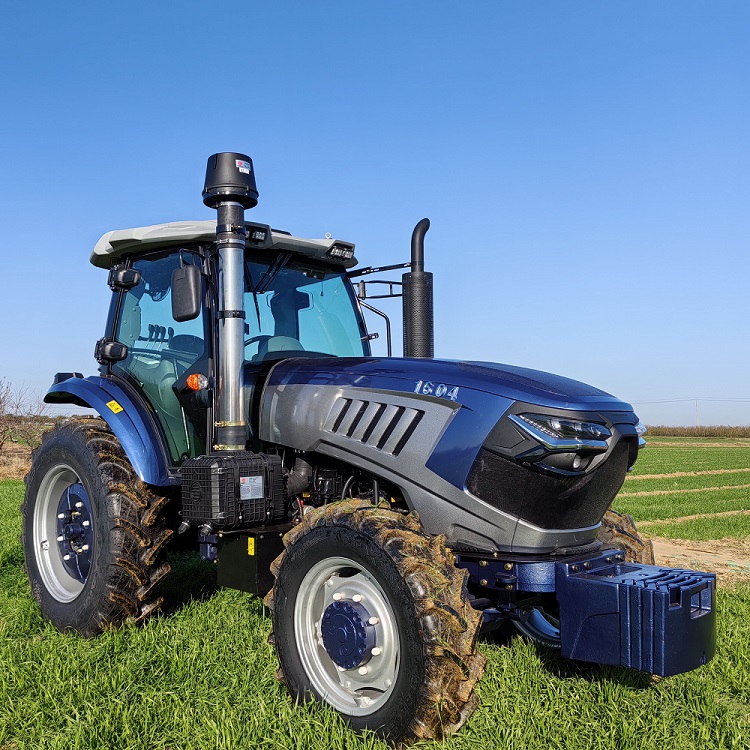
VI. Several Suggestions for Promoting AI Technology to Empower Agricultural Mechanization
1. Increase Investment in Technology Research and Development and Innovation
Collaborative Research and Development of Multi - field Technologies: The application of AI technology in agricultural mechanization requires the collaborative development of technologies in multiple fields. The government and enterprises should increase the intensity of research and development investment in sensor technology, computer vision technology, machine learning algorithms, etc. For example, in the research and development of sensor technology, develop more accurate, durable, and low - cost soil moisture sensors, crop growth state monitoring sensors, etc. These sensors can provide more accurate data sources for AI algorithms, just like the eyes of the AI system, providing support for the precise operation of agricultural machinery equipment.
Encourage research institutions and enterprises to cooperate in research and development projects of agricultural robots, intelligent agricultural machinery, etc. For example, computer science and mechanical engineering majors in universities can cooperate with agricultural machinery manufacturing enterprises to jointly develop agricultural robots suitable for different environments and crop needs. University researchers can provide intelligent algorithms and control technologies, while enterprises are responsible for aspects such as mechanical structure design and manufacturing process optimization, jointly creating innovative agricultural machinery equipment.
Research and Development Aimed at Special Agricultural Needs: Since agricultural production has its particularities, including the complexity of crop growth and the diversity of farmland environments, special technical research and development is required for these special needs. For example, when developing intelligent robots for different crop picking, characteristics such as the tenderness, shape, and maturity identification of crops need to be considered. For the development of picking robots for relatively delicate fruits such as strawberries, it is necessary to avoid damage to the fruits during the picking process as much as possible.
In the research and development of agricultural machinery equipment for farmland in complex terrains, such as terraced fields in southern hilly areas, develop small - sized, lightweight, and flexible agricultural machinery equipment. These agricultural machinery should be able to meet the operation needs of small - area and irregular terrains. In the research and development process, the design of the power system, walking mechanism, and operation components needs to be comprehensively considered to ensure that the agricultural machinery can move freely and complete operations such as sowing, fertilization, and harvesting in complex terrains.
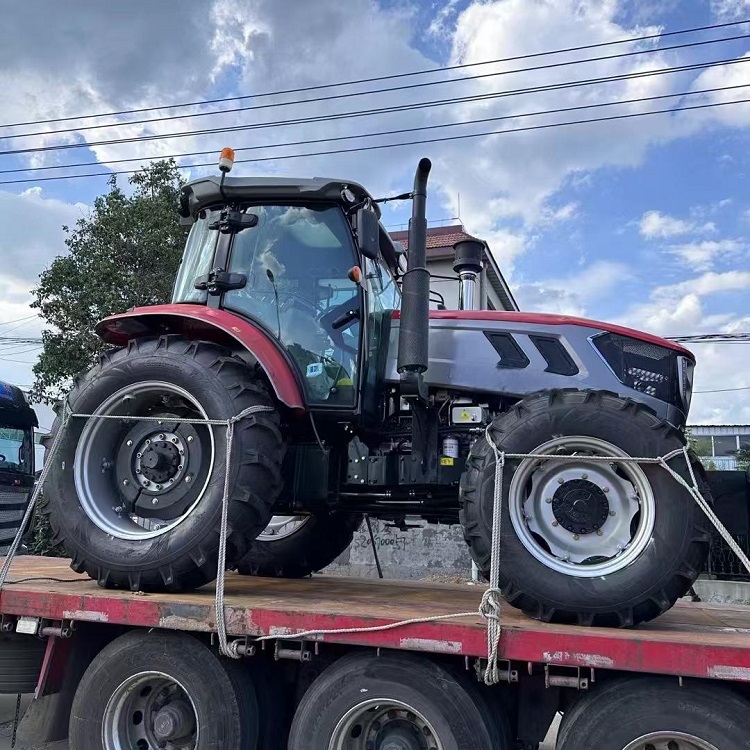
2. Improve the Intelligent Transformation and Upgrading of Agricultural Machinery
Hardware Intelligent Transformation of Agricultural Machinery Equipment: For existing agricultural machinery equipment, its hardware can be intelligently transformed and upgraded. For example, install intelligent navigation systems and sensor kits on traditional agricultural machinery equipment such as tractors and harvesters. The intelligent navigation system can enable agricultural machinery to achieve automatic navigation, travel and operate according to preset routes, and improve operation accuracy and efficiency. The sensor kit can monitor the working status and operation parameters of agricultural machinery equipment, such as engine speed, oil temperature, operation depth, etc. These data can be transmitted to the control system of the agricultural machinery or a remote monitoring platform, enabling operators or managers to grasp the operation status of the agricultural machinery in real - time and discover and handle potential faults in a timely manner.
In terms of the key components of agricultural machinery, such as the intelligent upgrade of the engine, intelligent fuel injection technology and engine fault self - diagnosis technology can be adopted. Intelligent fuel injection technology can automatically adjust the fuel injection volume according to the operation load and environmental conditions of the agricultural machinery, improve fuel utilization, and reduce fuel consumption and environmental pollution. The engine fault self - diagnosis technology can monitor various operating parameters of the engine in real - time. Once an abnormal situation is detected, it can quickly locate the cause of the fault and remind the operator to carry out maintenance, reducing the downtime of agricultural machinery due to faults.
3. Software Intelligent Upgrade of Agricultural Machinery Equipment
The software intelligent upgrade of agricultural machinery equipment is equally important. Develop intelligent control system software suitable for agricultural machinery equipment and optimize the operation process of agricultural machinery through software algorithms. For example, in the software upgrade of seeders, algorithms for automatically adjusting operation parameters such as seeding rate, seeding spacing, and seeding depth according to crop types, soil conditions, and seeding requirements. These algorithms are established based on a large amount of experimental data and agricultural expert experience and are continuously optimized and improved through data collection and analysis.
Use machine learning and artificial intelligence algorithms to analyze and mine the historical operation data of agricultural machinery, so as to predict and optimize the arrangement of future operation tasks. For example, according to the sowing and harvesting times of previous years, as well as data such as weather change laws and soil moisture conditions, predict the best sowing and harvesting times for the next cycle, and arrange agricultural machinery scheduling and operation plans in advance to achieve scientific management of agricultural production, improve the utilization efficiency of agricultural machinery, and increase agricultural production benefits.
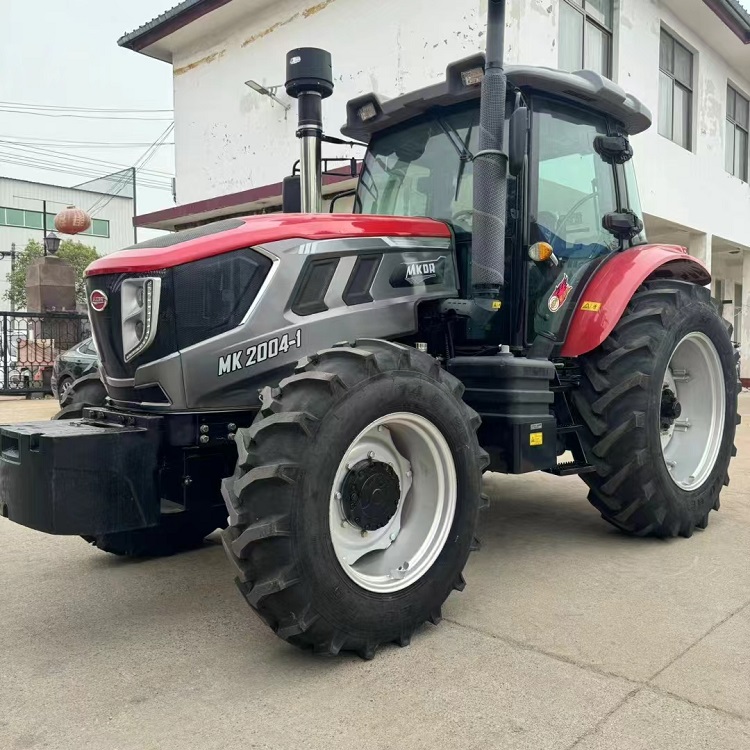
4. Strengthen the Construction of Agricultural Data Resources
Improvement of the Data Collection Network: Building a complete agricultural data collection network is the foundation. Widely deploy various sensors in farmland, including soil sensors, meteorological sensors, crop growth sensors, etc. For example, soil fertility sensors can be evenly set in a large - scale farm according to a certain density and layout to ensure the acquisition of comprehensive and accurate soil fertility data information.
Use UAVs, satellite remote sensing, and other means to collect macro - data of farmland. UAVs can regularly conduct aerial inspections of farmland to obtain crop growth image data; satellite remote sensing can cover a larger area and obtain information such as the vegetation index and land use type of farmland. These data collection means complement each other and can provide all - round data support for agricultural production.
Construction of the Data Management and Sharing Platform: Led by the government or industry associations, establish a unified agricultural data management and sharing platform. This platform is responsible for the centralized management, storage, and backup of various collected agricultural data to ensure the security and integrity of the data. For example, use cloud computing technology to build a large - capacity data storage center to facilitate data query, retrieval, and analysis.
In terms of data sharing, formulate reasonable data sharing rules and mechanisms for different agricultural production entities (such as farmers, agricultural machinery enterprises, agricultural research institutions, etc.). Enable agricultural data to circulate and be shared among various entities under legal and compliant premises. For example, agricultural machinery enterprises can develop more suitable intelligent agricultural machinery equipment according to the farmland soil data and crop planting conditions provided by farmers; agricultural research institutions can use the shared data for research and development experiments of new agricultural technologies and varieties.
5. Cultivate a Professional Talent Team
Optimization of Relevant Professional Settings and Training Programs in Universities: In terms of higher education, agricultural universities and science and engineering universities should attach more importance to the setting of majors and the construction of curriculum systems related to the application of AI technology in agricultural mechanization. For example, add relevant courses such as AI technology, sensor technology, and intelligent agricultural machinery design in agricultural engineering majors. In curriculum teaching, pay attention to the combination of theory and practice, and increase teaching links such as actual case analysis and experimental operations.
Universities can cooperate with agricultural machinery enterprises and research institutions to establish internship bases or joint training programs. For example, students can intern in the production lines of agricultural machinery enterprises to understand the manufacturing and intelligent transformation process of agricultural machinery equipment; participate in relevant innovation projects of research institutions to deeply master the application research methods of AI technology in agricultural mechanization and improve students' practical operation ability and problem - solving ability.
Technical Training and Knowledge Update for Incumbent Personnel: Conduct regular AI technology and intelligent agricultural machinery operation training for existing agricultural practitioners (including agricultural machinery operators, agricultural technicians, etc.). These trainings can be carried out in a combination of online and offline methods. For example, online learning resources can be provided through online course platforms, and agricultural machinery operators can study independently according to their own time arrangements; offline, centralized trainings can be organized, and experts can provide face - to - face guidance and operations to deepen the understanding and application ability of practitioners of new technologies.
Provide incentive mechanisms to encourage agricultural practitioners to continuously update their knowledge and improve their skills. For example, set up professional skills subsidies, and give certain economic subsidies to those who pass the assessment of relevant new technologies; establish a professional skill promotion channel, link technical capabilities and knowledge levels with salary treatment, career promotion, etc., and stimulate the learning enthusiasm of agricultural practitioners.
Author: The Hanzhong woodcutter
Source: Agricultural Machinery News Network

